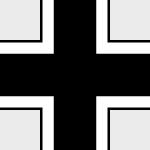Dragon DRR63243 German Mid Production Sd. Kfz. 161 PzKpfw IV Ausf. J Medium Tank with Schurzen Side Skirts - 2.Panzer Abteilung 115, 15.Panzer Grenadier Division, Champs, Belgium, 1944 (1:72 Scale)
"If the tank succeeds, then victory follows."
- Major-General Heinz Guderian, "Achtung Panzer!"
 Just one month prior to the commencement of "Operation Typhoon" (the German assault on Moscow) the Waffenamt was scheduled to begin installing the long-barreled 7.5cm KwK gun on its new Mark IV Ausf G tanks. However, when the Wehrmacht encountered the superior Russian KV-1 and T-34 tanks during the summer campaigning season, a decision was made to mount the 7.5cm KwK40 L/43 gun onto as many existing Mark IVs as possible. Since the new gun fired larger rounds than the short-barreled gun mounted on the F1 tanks, ammunition storage capacity had to be increased and the crew compartment had to be re-arranged to accommodate the modifications.
Just one month prior to the commencement of "Operation Typhoon" (the German assault on Moscow) the Waffenamt was scheduled to begin installing the long-barreled 7.5cm KwK gun on its new Mark IV Ausf G tanks. However, when the Wehrmacht encountered the superior Russian KV-1 and T-34 tanks during the summer campaigning season, a decision was made to mount the 7.5cm KwK40 L/43 gun onto as many existing Mark IVs as possible. Since the new gun fired larger rounds than the short-barreled gun mounted on the F1 tanks, ammunition storage capacity had to be increased and the crew compartment had to be re-arranged to accommodate the modifications.
The turret of the Panzer IV Ausf.J was the same as that of the Ausf.H, with a turret ring diameter of 1.60 m. The only substantial modification was the adoption of the Nahverteidigungswaffe grenade launcher (close-in defense weapon) on the right side of the smoke extractor. In vehicles manufactured after May 1944, the Maschinenpistolen Stopfen (gun ports) on the back of the turret and on the side access doors were removed, as were the vision ports. However, this modification was not carried out on all vehicles. Some Ausf.J tanks with the pistol ports came off the assembly lines in 1945 because not all the companies that produced the Panzer IV turrets had removed these details.
In June 1944, three sockets were added on the roof of the turret for the assembly of a 2-tonne winch to lift parts of the vehicle or of other vehicles in the vicinity of a Panzer IV for maintenance and replacement. The commander's cupola hatch was replaced after October 1944 with a pivoting hatch, very similar to that of the Tiger and Panther.
The cover of the smoke extractor was modified after November 1944 to allow a 360 degrees use of the Nahverteidigungswaffe. The bracket for the Orterkompass 38 type II, a navigation compass mounted, when required, outside the tank, was welded over the smoke extractor. Inside the vehicle, the steel plates did not allow the compass to find the North Magnetic Pole.
The Fliegerbeschussgerat 42 (anti-aircraft machine gun support) mounted on the commander's cupola was also modified to speed up production and to adapt to the new pivoting hatch.
This particular 1:72 scale replica of a PzKpfw IV Ausf. J medium tank with schurzen side armor skirts was attached to Panzer Abteilung 115, 15.Panzer Grenadier Division, then deployed to Champs, Belgium, during 1944.
Pre-order! Ship Date: June 2024.
Dimensions:
Length: 4-inches
Width: 1-1/2-inches
Release Date: ?
Historical Account: "The Liberation of Belgium" - On September 2nd, 1944, allied troops crossed the Belgian border at diverse places. The process of liberation went fast: in ten days a large majority of the country was liberated. But it did not put an end to the German occupation. Two months later Hitler surprised the Allies with his last offensive: the Battle of the Bulge.
The 1st U.S. Army, on its way to Tournai, crossed the Belgian border in the morning of September 2nd, 1944, in the hamlet of Cendron (Hainaut). On the same day the German authorities and Belgian Nazi collaborators packed their bags, whereas the 2nd British Army at Douai, France, received the order to march on to Brussels. The British soldiers arrived in Belgium on September 3rd and in the evening, together with the Belgian Brigade Piron, entered the capital. On September 17th, almost the entire territory was liberated. This rapid liberation was partly made possible by the Resistance Groups, that had been particularly active. They guided the Allied troops, prevented destruction by the fleeing Germans, such as at the Antwerp harbor, and hunted down collaborators.
The Allied troops received a hero's welcome in Belgium. In town and country the streets were colored by the American, British, French, Soviet and, of course, Belgian flags. They brought with them items that had become very scarce, like real coffee, chocolate, Coca-Cola, cigarettes, jazz music and much more. The legitimate authorities of Belgium were re-established. In the absence of King Leopold III, Prince Charles was appointed Regent on September 20th. Now that the occupiers had left, it was time to punish the collaborators. Sanctions were imposed and the citizens used a form of popular justice: women were shorn, lynchings were numerous, even though real executions were rare. But Germany had no intention to give up yet. On December 16th, Hitler surprised everyone with a last offensive in the Belgian Ardennes, known as the Battle of the Bulge. It took another six weeks of fierce fighting until on February 4th, 1945, all Belgian territory was liberated.


